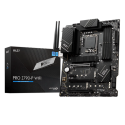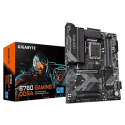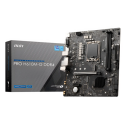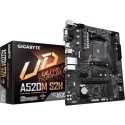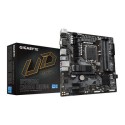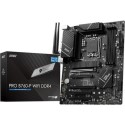The GigaByte A520M K V2 is an AMD A520 AM4 micro ATX motherboard designed to provide reliable performance for budget-conscious PC builds. With support for DDR4 memory and the AM4 socket, it offers compatibility with a wide range of AMD Ryzen processors, providing flexibility for different computing needs. Its micro ATX form factor makes it suitable for compact builds while still offering essential features such as PCIe 3.0 slots, USB ports, and SATA connections. Ideal for entry-level gaming setups or productivity-focused systems, the A520M K V2 motherboard delivers a balance of affordability, compatibility, and functionality.
NVMe PCIe Gen 3 x4 2280 M.2 Connector
GIGABYTE Motherboards are focused on delivering M.2 technology to enthusiasts who want to maximize their system’s potential.
GbE LAN with Bandwidth Management
GbE LAN features a network bandwidth management application which helps to improve network latency and maintain low ping times to deliver better responsiveness in crowded LAN environments.
Smart Fan 5
With Smart Fan 5 users can ensure that their gaming PC can maintain its performance while staying cool. Smart Fan 5 allows users to interchange their fan headers to reflect different thermal sensors at different locations on the motherboard. Not only that, with Smart Fan 5 more hybrid fan headers that support both PWM and Voltage mode fans have been introduced to make the motherboard more liquid cooling friendly.
High-End Audio Capacitors
GIGABYTE motherboards use high-end audio capacitors. These high quality capacitors help deliver high resolution and high fidelity audio to provide the most realistic sound effects for gamers.
Audio Noise Guard
GIGABYTE motherboards feature an audio noise guard that essentially separates the board’s sensitive analog audio components from potential noise pollution at the PCB level.
Refreshed BIOS
The BIOS is essential for users during initial setup to allow for the most optimal settings. With a new GUI and easier to use functionalities, GIGABYTE has been able to reinvent the BIOS to give users a better experience while setting up their new system.





















